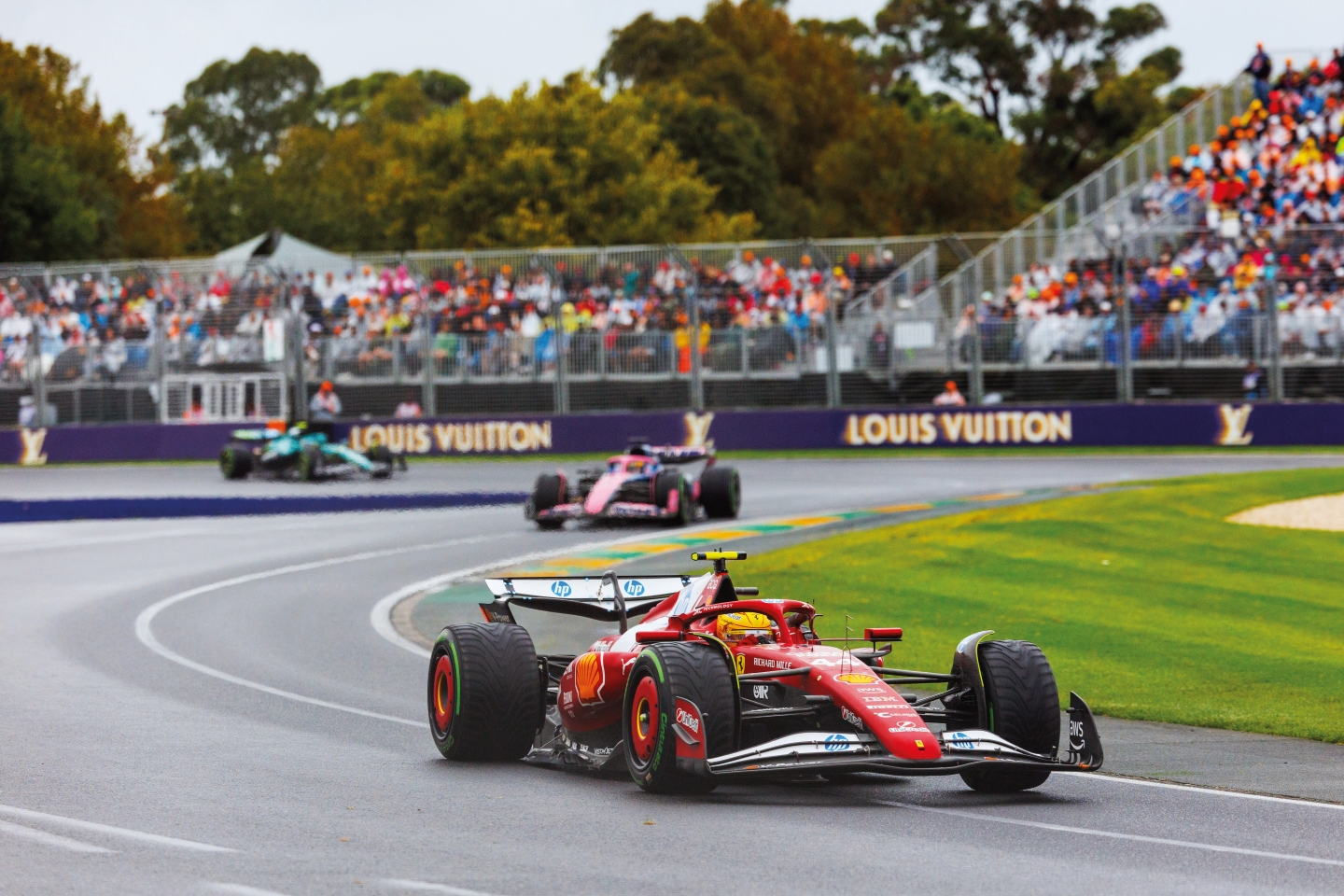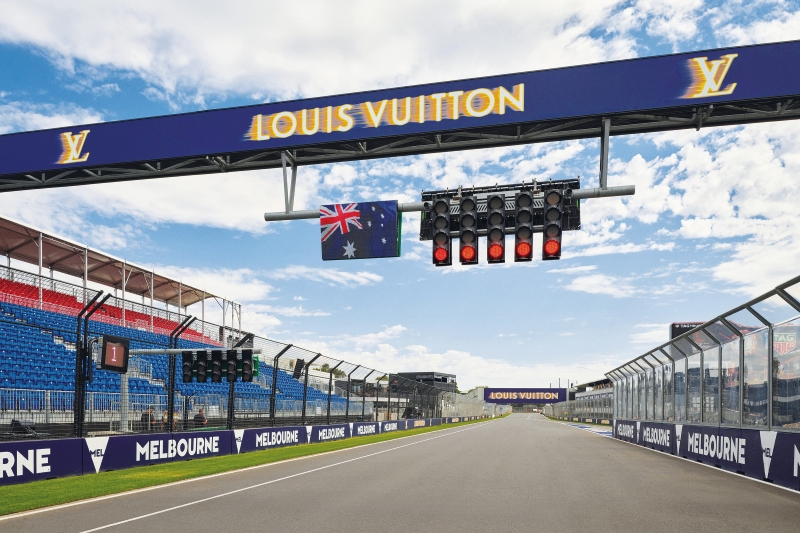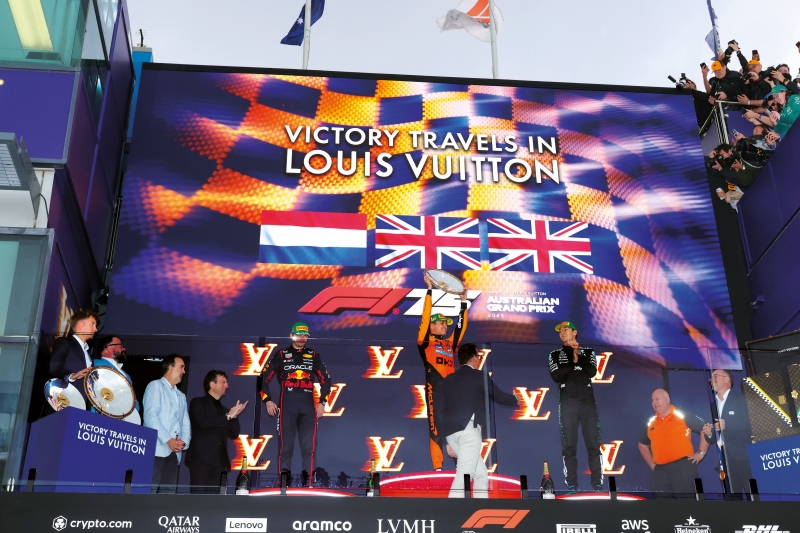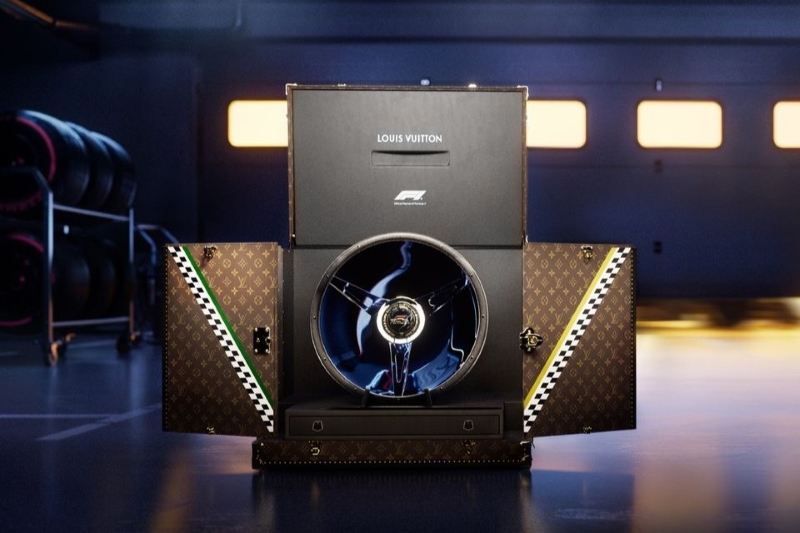
Historically, Louis Vuitton has long enjoyed strong ties with the automotive world (All photos: Louis Vuitton)
Anyone watching the Australian Grand Prix which took place in Melbourne from March 13 to 16 would have noticed a new stylish presence on and off the track. Fashion has well and truly come to Formula 1 as Louis Vuitton kicked off the first race of the 2025 Grand Prix season with unprecedented — and unmissable — signage that practically wrapped itself around Albert Park, from across the barrier and all the way along key sections of the circuit.
F1 aficionados would also not have failed to notice that the luxury house had secured naming rights to the Australian GP. All these and more mark Louis Vuitton coming on board as an official F1 partner, which smoothly follows the LVMH conglomerate’s announcement of its 10-year global partnership agreement with the motorsport series last October. (Watchmaker Rolex was the previous global partner and official timekeeper.)
Thrills + spills
The season’s opening race, however, was anything but smooth. Despite the world knowing how changeable Melbourne weather can be (qualifying day saw lashings of sun and blistering temperatures that hovered around the 36°C, which plummeted to 14°C the next), no one could have anticipated the entirety of race day being wet, wild and horrendously windy — all surefire elements for a tough and heart-stopping event. And it certainly turned out that way, with a delayed start and two first-lap incidents from the get-go.
_dsf1094.jpg

Rookie drivers took the biggest hit as a result of the ever-changing, challenging track conditions. Isack Hadjar was the first to come a cropper, followed by Jack Doohan (son of five-time Grand Prix motorcycle World Champion Mick), Liam Lawson and Gabriel Bortoleto. Even veteran racers Fernando Alonso and Carlos Sainz got caught out by the slippery road surfaces. All failed to finish. Of the 20 cars, only 14 managed to complete the race amid incessant chaos. Then, a late spell of intense rain broke the hearts of fans. At the midway mark, it almost seemed as if they would witness a papaya-hued podium finish with Lando Norris and Melburnian Oscar Piastri, both of McLaren, dominating.
Sadly, at Lap 44, Piastri skidded off the track and onto gravel and grass, took too long to get back into the race, and once again proved whispers of a “homeground curse” true: No Australian has mounted the podium since the country joined F1’s global circuit. Piastri ended up with a 9th spot finish — still in the top 10, bittersweet though it may be, and even ahead of Lewis Hamilton, who made his debut for Ferrari. Norris eventually succeeded in holding defending champion Max Verstappen back to take the top spot (and his first Albert Park win) and end the Dutchman’s winning streak. Countryman George Russell of Mercedes took third place.
2025-03-16t172009z_1381324472_mt1sopa000dbpcgm_rtrmadp_3_sopa.jpg

Trunk show
With sport emerging as one of Louis Vuitton’s foremost pillars, alongside the spirit of travel, fans and luxury watchers alike would have already realised the brand’s beefed-up presence at major global sporting events, including the Fifa World Cup, the Rugby World Cup, the Australian Open and last year’s Olympics. And with F1 viewership on a steady growth trajectory, especially among women, it appears that the maison is, for want of a better phrase, on the right track.
Historically, however, Louis Vuitton has long enjoyed strong ties with the automotive world. The brand’s now-ubiquitous LV monogram canvas is attributed to Georges Ferréol Vuitton, the founder’s son and only child. Georges, 29 then, was also a great fan of the newly-invented automobile by Carl Benz. Eleven years later, he would use that fascination productively, creating the prototype for what is now known as the Car Trunk or Malle Auto, which combines robustness and elegance, perfect for the new age of automobile travel. Georges would also oversee the creation of a specifically durable canvas material, ideal for the rough and tumble of globetrotting and able to withstand the elements, christened “Vuittonite”. This would serve as the precursor of today’s iconic Louis Vuitton canvas.
Naturally, the newly unveiled Formula 1 Louis Vuitton Australian Grand Prix 2025 trophy trunk would pay tribute to these founding codes while serving to transport, protect and showcase the ultimate prize of the competition, accompanied by a jaunty new catchphrase that reads “Victory Travels in Louis Vuitton”.
louis_vuitton_beauty_shot_trophy_trunk_melbourne.jpg

Created at the house’s historic atelier in Asnières, France, the malle boasts two folding front panels handpainted with a “V” — signifying both “victory” as well as “Vuitton” — in green and yellow, a respectful nod to Australia’s traditional sporting colours, which evoke the country’s landscape and eucalyptus trees, the fleece of Australian wool, its grain harvests and mineral wealth as well as the national floral emblem of the golden wattle.
Despite the thrills, spills and competitive kerfuffle that marked the first race of the 2025 F1 season, few could deny Norris’ steady yet gutsy win in Melbourne. And as the British racing driver savours every second of his first-ever Australian GP triumph ahead of another demanding race weekend in Shanghai, China, it is a powerful visual reminder that victory does indeed travel in Louis Vuitton. And let us not forget how all the world loves a winner too.
This article first appeared on Mar 24, 2025 in The Edge Malaysia.


